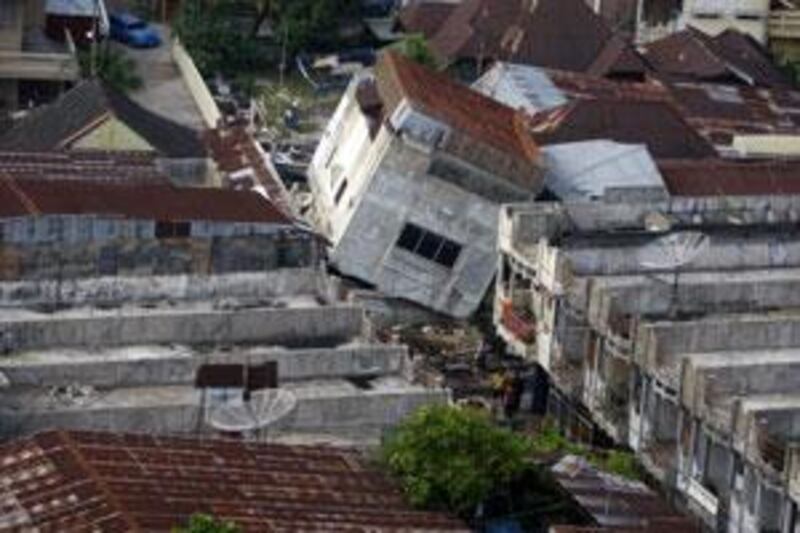The death toll from a week of catastrophes in the Asia-Pacific has risen to 1,680 as the region struggled to cope with a freak series of earthquakes, tsunamis and typhoons. In Indonesia, rescuers were scrambling to reach up to 4,000 people still believed to be trapped under the rubble after Wednesday's 7.6-magnitude quake which devastated the city of Padang in Sumatra island. The extent of the disaster widened as attention turned to the hundreds of villages in the outlying hills, where at least four settlements have been completely buried by landslides and many more have been damaged.
A search and rescue officer told AFP that as many as 400 people may have died in those four villages alone. The United Nations has said that at least 1,100 people have died in the Indonesian disaster. The official toll stands at 777 but the government has said it expects the figure to go much higher. "We estimate about 3,000 to 4,000 people are still trapped or buried under the rubble," said UN Humanitarian Co-ordinator in Indonesia El-Mostafa Belamih.
"Generally there is a maximum of five days from the time the quake strikes for the buried or trapped victims to survive. We only have one or two days left to save them." In Samoa, officials said they believed more than 150 people had died in the tsunami triggered by Tuesday's massive 8.0-magnitude undersea quake, pushing the toll for the Pacific islands to above 190. At least 139 people were feared dead in Samoa alone, with 129 confirmed killed and 10 missing. Another 32 were confirmed dead in neighbouring American Samoa and nine in Tonga, about 1,000 kilometres away.
"Volunteers are still finding bodies and as time goes on the chances of finding people alive are slimmer and slimmer," said Rosemarie North of the Samoa Red Cross. "I think we have to assume the missing are probably dead." There was little respite for countries struck by typhoons and tropical storms barely a week ago. Still mopping up after last week's tropical storm Ketsana, the Philippines was today being pummelled by Typhoon Parma, which ripped open houses and cut off power lines as it smashed into the country's north.
However, the typhoon veered away from Manila, sparing millions of people who were struggling to recover from massive rains that submerged most of the nation's capital last weekend, leaving 293 people dead. "The wind is very, very angry," said Roberto Damian, the police chief in the northern province of Cagayan, about 400km from the Philippine capital. "I can see trees are being toppled inside our camp ... one sturdy Narra tree was uprooted and smashed a car and a house. We cannot go out," he said in a radio interview before his line went dead.
In Vietnam, Ketsana reached typhoon strength after inundating Manila to become one of the worst disasters to hit the country in recent years, with officials saying today at least 107 had been killed. Initial estimates of the damage in Vietnam shot up to $587 million, according to government figures released on Friday for 10 out of 14 provinces affected by Ketsana. Vietnam suffers annually from tropical storms and typhoons but this year's toll exceeds the deaths when tropical storm Durian killed at least 70 in the country's south, and Typhoon Xangsane left more than 70 dead in central Vietnam, both in 2006.
In India there was a new crisis brewing, as the death toll from flash floods and heavy rains in the country's south rose to at least 127 people, triggering intensive rescue efforts. *AFP





